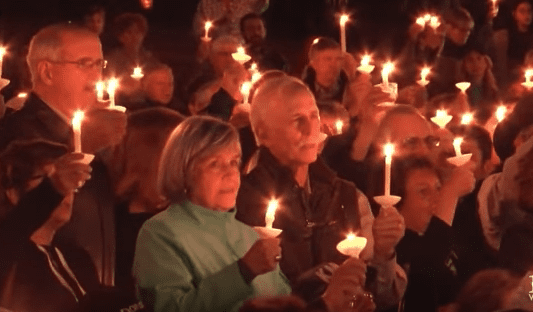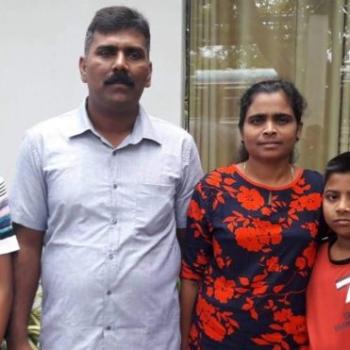“Blessed are they who mourn.”
How striking it is to hear these words right now. When Jesus delivers these Beatitudes, some of the first people he proclaims to be blessed are those who are grieving.
With all that has been happening in the news this week, I couldn’t help but think: There are many “blesseds” in Pittsburgh right now, and many around the world mourning with them during this painful time.
The other day, the New York Times wrote about the Jewish burial tradition and mentioned this:
“Jews do not mourn alone,” the reporter wrote. “During shiva, community members visit the relatives of those who have died, bringing food and standing together for kaddish, the memorial prayer. They sit with them, speak fondly of those who have passed on and comfort those left behind.”
This suggests that when Jesus spoke of the “blessed” who mourn, he was speaking of more than sorrow or tears. He was speaking of community. He was talking about those who offer comfort—weeping with those who weep, praying with those who pray, not letting someone mourn alone.
To do this is an act of solidarity —a gesture of compassion and love.
St. Paul famously wrote that “love is patient, love is kind.” This love is exceptionally patient and kind. It is surrendering self. It is truly being there for others.
And that is where sainthood begins. That, I think, is why it appears at the beginning of the Beatitudes.
Here is the beginning of love.
And it is important for us to remember those who did it so well—which is why we have this great solemnity. We begin this month by honoring the great Communion of Saints who serve as models for living — and models of loving.
Our faith keeps them always before us. We surround ourselves with the saints; just look around this church, in its walls and its windows. But we need to remember, too: they are more than plaster, paint and glass. They were just like us: prone to the same sins, attracted by the same temptations.
But one of the reasons we have this feast day is to remember that they became something greater — and so can we.
Each of us has the potential to become a saint.
So it’s worth asking ourselves: How are we doing?
The Gospel gives us a checklist.
Are we “poor in spirit”? Do we give up things for ourselves so that we can give more to others?
How selflessly do we mourn? How much time do we give to others who are sorrowful, or forgotten, or alone?
Are we meek? Do we strive like John the Baptist to decrease, so that Christ may increase?
How zealously do we hunger and thirst for righteousness? Do we stand for justice and what is right? Do we stand beside those who are victims?
Do we show mercy? Do we generously forgive?
Do we have clean hearts? Or are they cluttered with jealousy or pettiness or hate?
Do we strive to make peace? Do we work to mend fences and build bridges? Or do we work, instead, to cause division, bitterness or spite?
Finally: are we willing to be persecuted, to suffer, in the name of Christ?
This is where blessedness begins.
This is how holiness takes root.
This is how we can become saints.
I keep going back to that one haunting phrase: “Blessed are those who mourn.”
It means being strong for those who are weak—comforting those who feel abandoned or alone or in despair.
This is something all the saints have in common.
They teach us this lesson: like the Beatitudes, it all begins with compassion.
With charity.
With love.
As we honor all the saints today and look up at them in our windows and our icons and our statues, let’s also look around us at some of the saints in our midst — men, women and children who are trying to live out the beatitudes in our own time. Saints in the making.
People who model mercy…compassion…peace…and courage. You see them tending to the sick in India. Passing out sandwiches at Port Authority in New York. Or supporting a weeping widow in Pittsburgh.
In one way or another, they are “blessed.”
As we pray with all the saints this day, let’s ask ourselves: How can we be more like them?
How can they show us to be more like Christ?
How can they show us what it means to love — and what it takes to become a saint?













